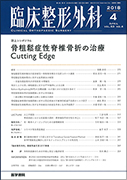1) Mohamed W, Sommer U, Sethi S, et al. Intracellular proliferation of S. aureus in osteoblasts and effects of rifampicin and gentamicin on S. aureus intracellular proliferation and survival. Eur Cell Mater 2014;28:258-68.
2) Ellington JK, Elhofy A, Bost KL, et al. Involvement of mitogen-activated protein kinase pathways in Staphylococcus aureus invasion of normal osteoblasts. Infect Immun 2001;69:5235-42.
3) Fraunholz M, Sinha B. Intracellular Staphylococcus aureus:live-in and let die. Front Cell Infect Microbiol 2012;2:43. doi:10.3389/fcimb.2012.00043.
4) Hamza T, Dietz M, Pham D, et al. Intra-cellular Staphylococcus aureus alone causes infection in vivo. Eur Cell Mater 2013;25:341-50;discussion 350.
5) Darouiche RO, Hamill RJ:Antibiotic penetration of and bactericidal activity within endothelial cells. Antimicrob Agents Chemother 1994;38:1059-64.
6) Valour F, Trouillet-Assant S, Riffard N, et al. Antimicrobial activity against intraosteoblastic Staphylococcus aureus. Antimicrob Agents Chemother 2015;59:2029-36. doi:10.1128/AAC.04359-14.
7) Zhang L, Pang Y, Yu X, et al. Linezolid in the treatment of extensively drug-resistant tuberculosis. Infection 2014;42:705-11. doi:10.1007/s15010-014-0632-2.
8) Koga H:High-performance liquid chromatography measurement of antimicrobial concentrations in polymorphonuclear leukocytes. Antimicrob Agents Chemother 1987;31:1904-8.
9) 岩垣明隆.テトラサイクリン系薬剤.化学療法の領域2002;18:1316-9.
10) Peltola H, Pääkkönen M, Kallio P, et al. Clindamycin vs. first-generation cephalosporins for acute osteoarticular infections of childhood--a prospective quasi-randomized controlled trial. Clin Microbiol Infect 2012;18:582-9. doi:10.1111/j.1469-0691.2011.03643.x.
11) Mader JT, Adams K, Morrison L. Comparative evaluation of cefazolin and clindamycin in the treatment of experimental Staphylococcus aureus osteomyelitis in rabbits. Antimicrob Agents Chemother 1989;33:1760-4.
12) Curis E, Pestre V, Jullien V, et al. Pharmacokinetic variability of clindamycin and influence of rifampicin on clindamycin concentration in patients with bone and joint infections. Infection 2015;43:473-81. doi:10.1007/s15010-015-0773-y.
13) Hoyo I, Martínez-Pastor J, Garcia-Ramiro S. Decreased serum linezolid concentrations in two patients receiving linezolid and rifampicin due to bone infections. Scand J Infect Dis 2012;44:548-50. doi:10.3109/00365548.2012.663931. Epub 2012 Mar 4.
14) 牧山公彦,難波良文,黒田崇之・他.人工膝関節置換術後感染に対し人工関節を温存した治療成績.JOSKAS 2014;9:728-32.
15) Cattaneo D, Alffenaar JW, Neely M. Drug monitoring and individual dose optimization of antimicrobial drugs:oxazolidinones. Expert Opin Drug Metab Toxicol 2016;12:533-44. doi:10.1517/17425255.2016.1166204.
16) 辻 泰弘,山本善裕.リネゾリドのTDMを基盤とした外科感染症治療の展望.日本外科感染症学会雑誌2016;13:637-42.
17) Zimmerli W, Widmer AF, Blatter M, et al. Role of rifampin for treatment of orthopedic implant-related staphylococcal infections:a randomized controlled trial. Foreign-Body Infection (FBI) Study Group. JAMA 1998:279:1537-41.
18) Holmberg A, Thórhallsdóttir VG, Robertsson O, et al. 75% success rate after open debridement, exchange of tibial insert, and antibiotics in knee prosthetic joint infections. Acta Orthop 2015;86:457-62. doi:10.3109/17453674. 2015.1026756.
19) Lew DP, Waldvogel FA:Current concepts osteomyelitis. N Engl J Med 1997;336:999-1007.
20) Liu C, Bayer A, Cosgrove SE, et al. Clinical practice guidelines by the Infectious Diseases Society of America for the treatment of methicillin-resistant Staphylococcus aureus infections in adults and children. Clin Infect Dis 2011;52:e18-55.
21) Osmon DR, Berbari EF, Berendt AR, et al. Diagnosis and management of prosthetic joint infection:clinical practice guidelines by the Infectious Diseases Society of America. Clin Infect Dis 2013;56:e1-25.
22) Sendi P, Proctor RA. Staphylococcus aureus as an intracellular pathogen:the role of small colony variants. Trends Microbiol 2009;17:54-8. doi:10.1016/j.tim.2008.11.004.
23) 松下和彦,佐藤琢哉,松本 浩・他.生体材料・債権靱帯を温存できた多剤耐性菌による手術部位感染例の検討.日本骨・関節感染症学会雑誌2012;22:70-2.

